For the last year or more, CTA’s 2200-series rapid transit cars have been going, going… and now they’re gone. Recently, it was reported they had run their last on July 31.
But wait, there’s more! CTA decided to give them one final sendoff on August 8th, with a special farewell run after 44 years of service. As a regular CTA rider going back even before these “L” cars were new, this was one trip I just couldn’t miss. (You can read the CTA Service Bulletin here.)
First, there was a short non-stop “media run” between Rosemont and Jefferson Park. Then the extra train went out to the end of the Blue Line at O’Hare Airport, and ran all the way out to Forest Park and back starting at 11:11 am- and making all stops, despite being signed as an “A” train. (The CTA gave up on “skip-stop” service some years back.)
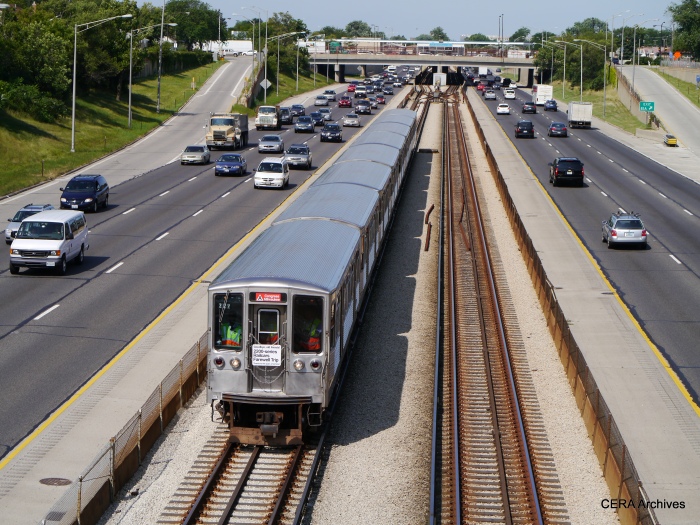
The “media run” at the Sayre avenue overpass along the Kennedy expressway.
These were the last cars on the CTA system that used “blinker” doors, a unique Chicago feature going back to the original experimental 5000 cars of 1947-48. The November 1950 issue of ERA Headlights explained their use on the first order of 6000s thusly:
There are four entrance-exit doors in each car– two on each side. Doors are located one-fourth the length of the car from each end. Under this arrangement, passengers will never be more than one-quarter of a car length from a door.
Each door is a double one– with a clear opening of 24 inches– that will permit passengers to enter and exit simultaneously in two separate lines.
The location and arrangement of doors will reduce boarding and alighting times, thereby contributing to faster service. The doors are interlocked with the motor controls so that a train cannot be started until all doors are closed. The doors have sensitive rubber edges that cause them to open automatically should they come in contact with an object while closing.
Final runs can be a somber affair, like a wake. But this one was more like a party. The cars were full of people, mostly fans, but some just regular riders. A train came along and they got on it. This is as it should be. People were laughing and talking, and reminiscing about the old days when the 2200s were the “state of the art.”
After 44 years, they still ran pretty good, and the body design has a timeless elegance that will never go out of style. They are a remarkable success story, and one that is even more exceptional when you consider how many contemporary railcar orders were flops.
This is in part due to the evolutionary, as opposed to revolutionary, nature of the 2200s design. They were an improved version, and a more refined one of their predecessors, the 2000s, which had a comparatively shorter life and were not as well liked.
The high-performance 2000s, only five years older than these cars, were the first series to come with air conditioning as standard equipment. But the compressors were underpowered and could not get the job done. Being mounted on the ceiling, they tended to leak water on anyone sitting in the middle of the car. When the a/c failed on really hot days, or couldn’t keep up, that resulted in some very sweltering conditions in those cars, which did not have windows that could be opened.
These shortcomings were dealt with in the 2200s. The air conditioning units were moved to below the riders. They were beefed up. The cars were eventually retrofitted with windows that could open if the a/c failed, but I really don’t recall ever seeing them used. Now we take air conditioning for granted on rapid transit cars, but there was a time when some considered it an unnecessary luxury.
The 2000s and 2200s, in turn, were improved versions of the 6000s, still my favorite. In some ways they will always be the quintessential CTA “L” cars. But these cars could go faster, and had better ride quality. They did not shake, rattle, and roll like the 6000s did as they strained to get up to a top speed of about 52 mph with a good tailwind.
It wasn’t a wake, it was a celebration. After it was over, the crowd milled about, some wanting to have their pictures taken standing next to the cars that they probably were sad to see depart. As they pulled out of the O’Hare terminal for the last time, they looked like they could go on for another 44 years. Instead, they are going to the scrapper, lock, stock, and blinker doors.
But a pair of these cars have been saved and are now at the Illinois Railway Museum in Union, where we hope they will continue to serve in the future. You might want to consider visiting them sometime, even if they have to be fitted with trolley poles.
CTA did them up right with period advertising and signage. For this trip, they dispensed with the canned station announcements and did things the old way, with the doors being controlled by a conductor, and spoken announcements. It brought back a lot of memories.
I guess you had to be there.
-David Sadowski
(Note: The author’s own photos were taken on August 8, 2013. Others are credited as appropriate.)
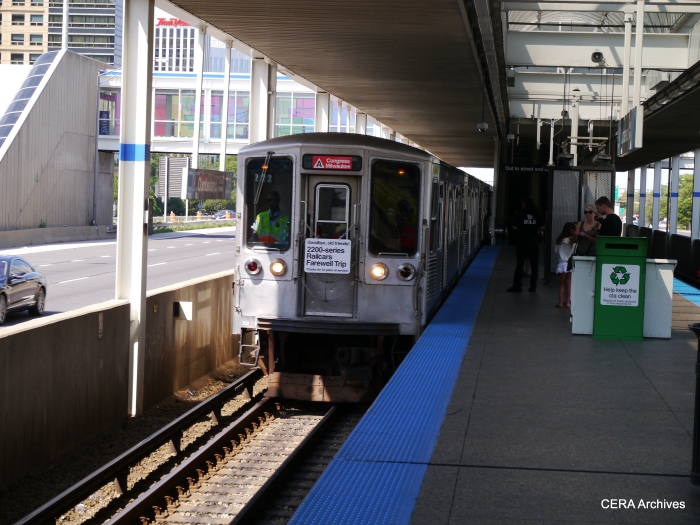
The final southbound run at Cumberland.
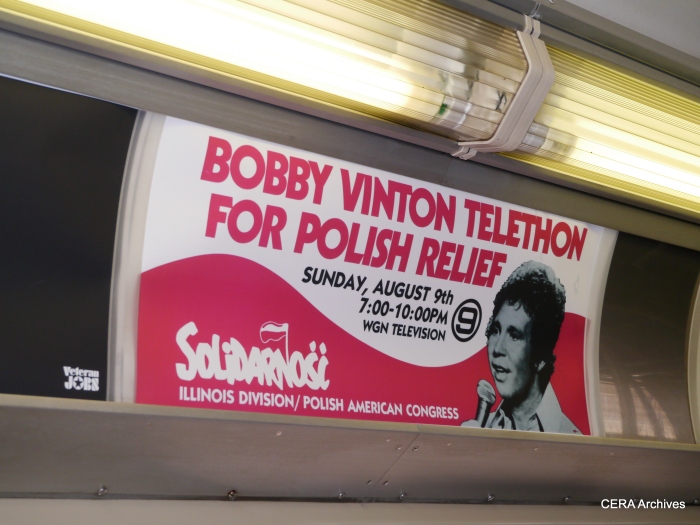
CTA decorated the train with reproductions of vintage ads.
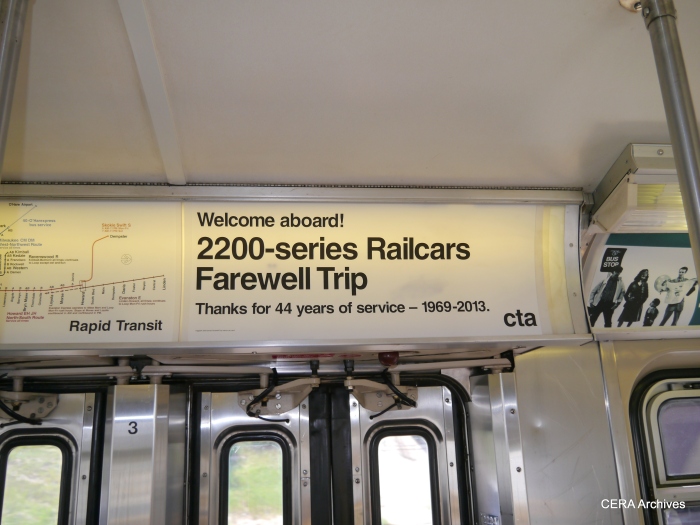

The old route map, circa 1970.

Map showing the “old” Congress-Douglas-Milwaukee route, before the O’Hare extension and the Pink Line.
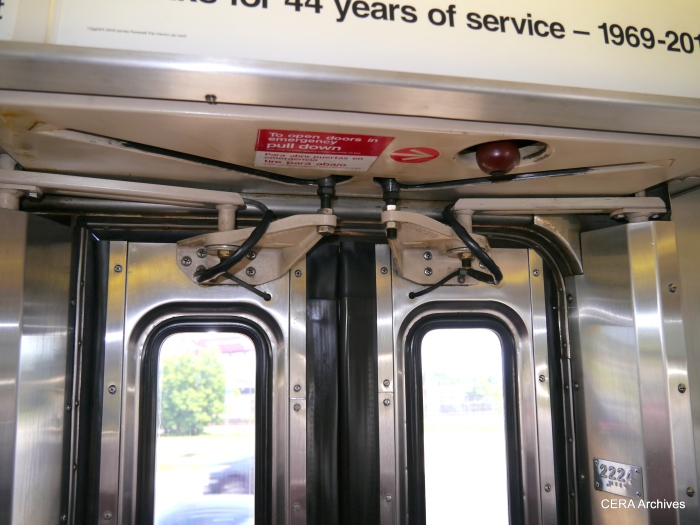
“Blinker” doors.

Graham Garfield in period CTA garb, from before the invention of “casual Friday.”

Our train has arrived in Forest Park.
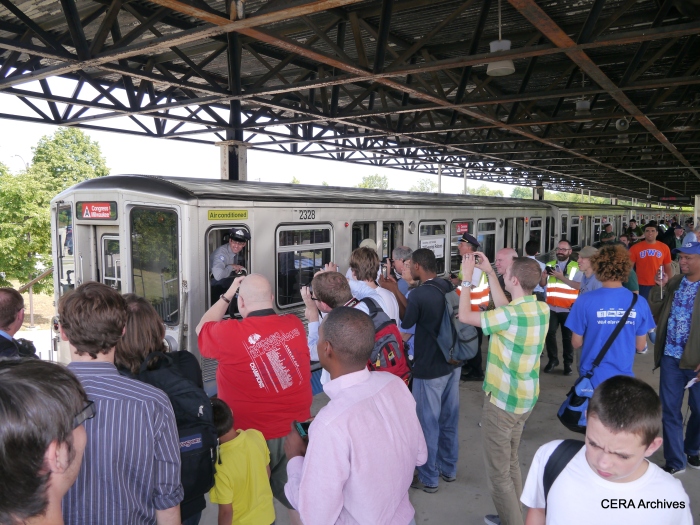
Everybody wants to get a picture, or get in the way of yours.

The 2200s on the turnaround loop at Forest Park.
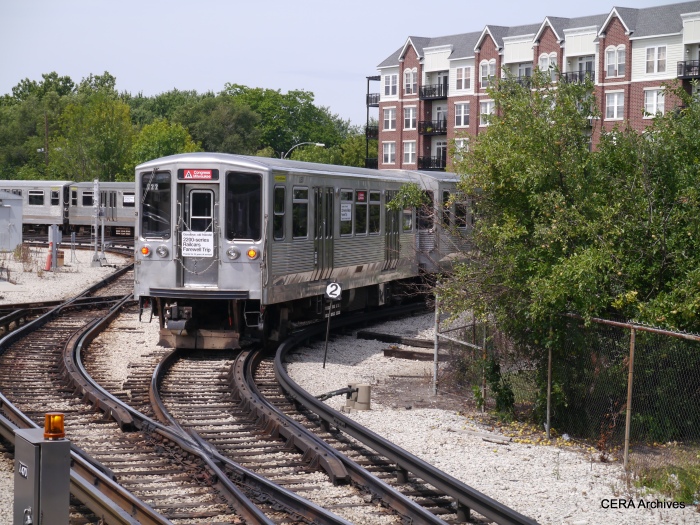
If CA&E service had resumed in 1959, this is approximately where their trains would have run.
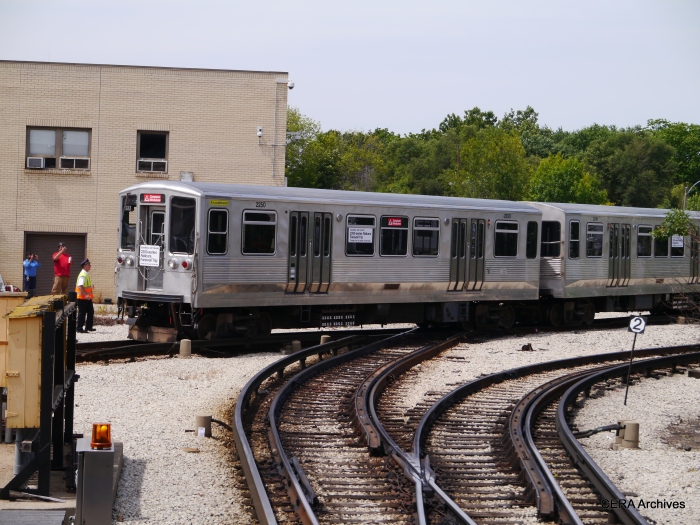

Ready for the return trip to O’Hare.
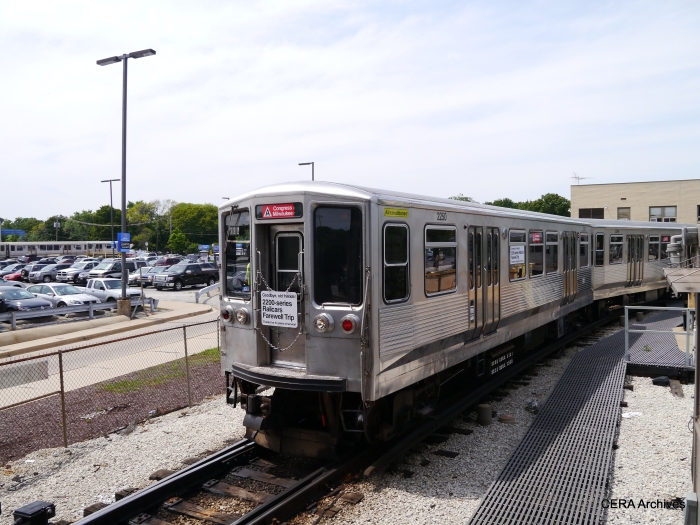
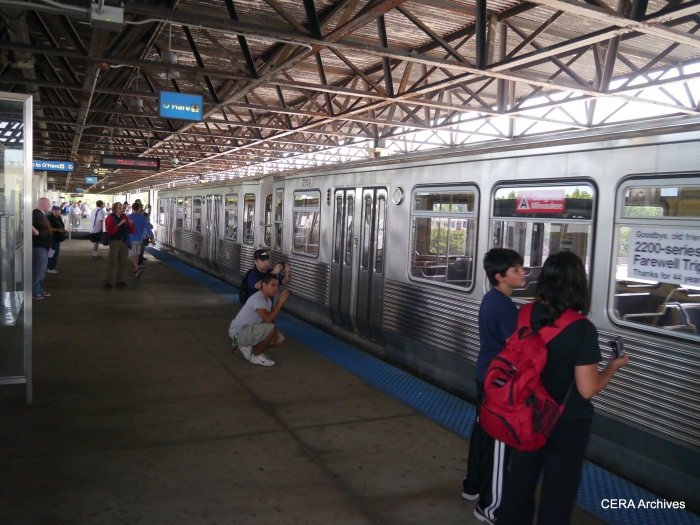
An “A” train making all stops.
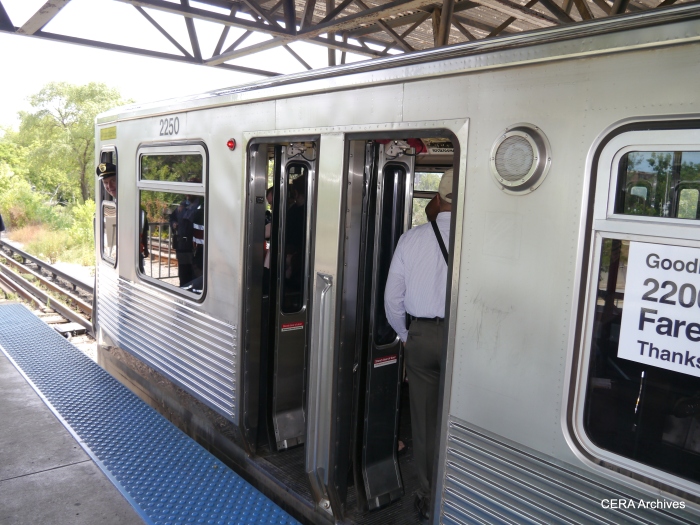
All aboard!
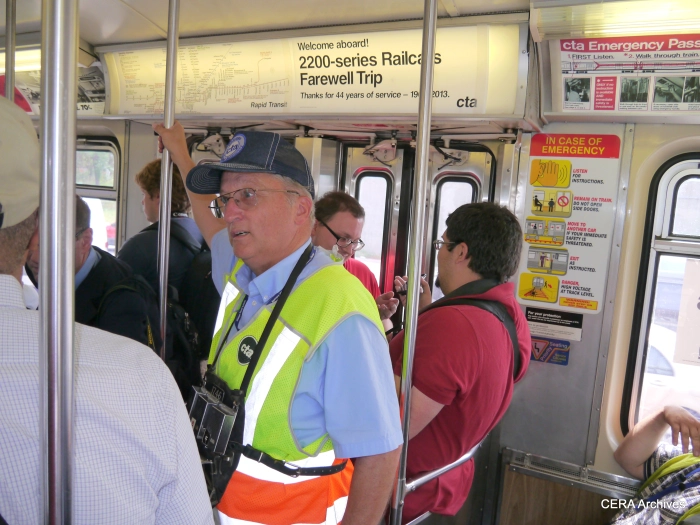
Author and historian Bruce Moffat.
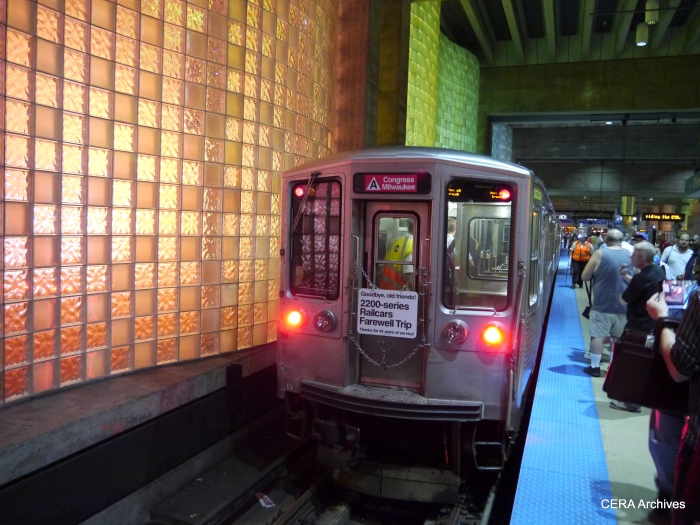
The end of the line, the CTA O’Hare terminal designed by Helmut Jahn.
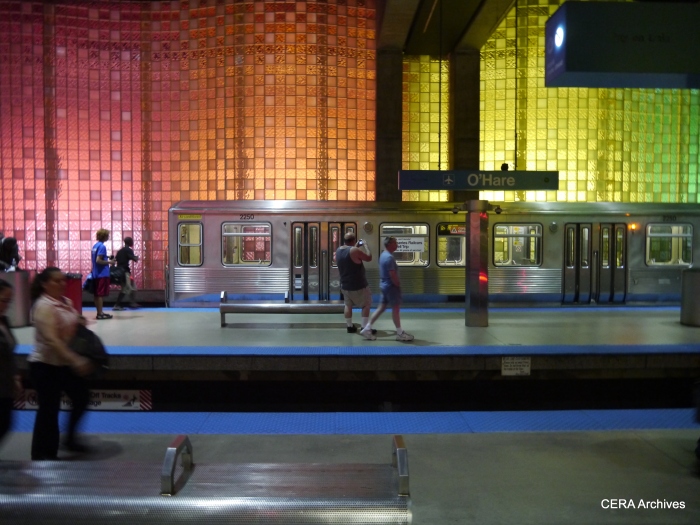
Fans take a few last-minute pictures. People started posing next to the cars after their final run.

The 2200s going off to oblivion.
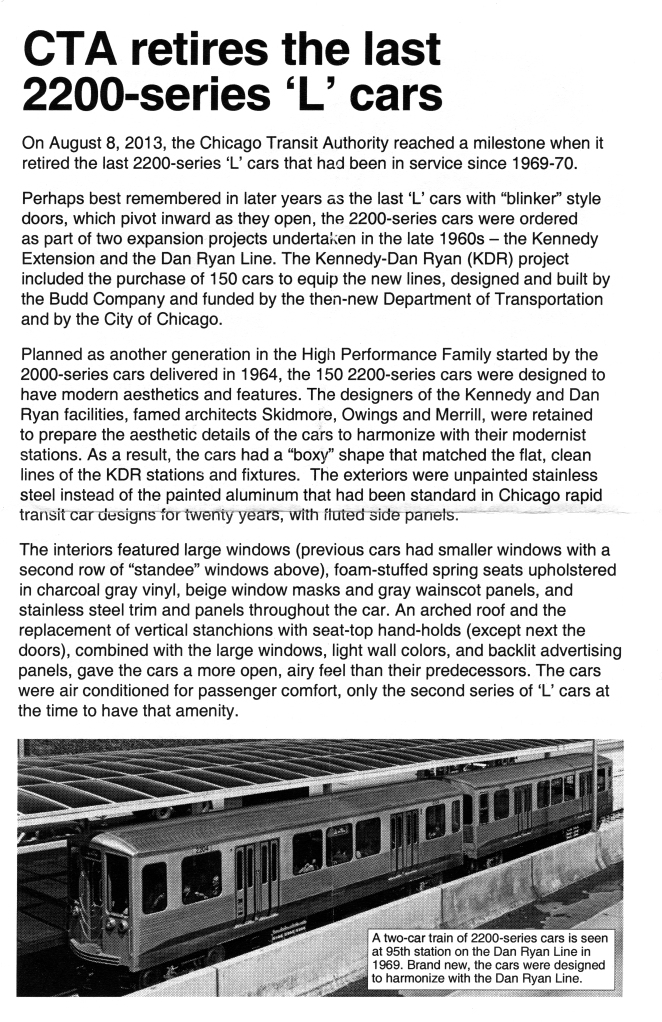
CTA handout from the trip.
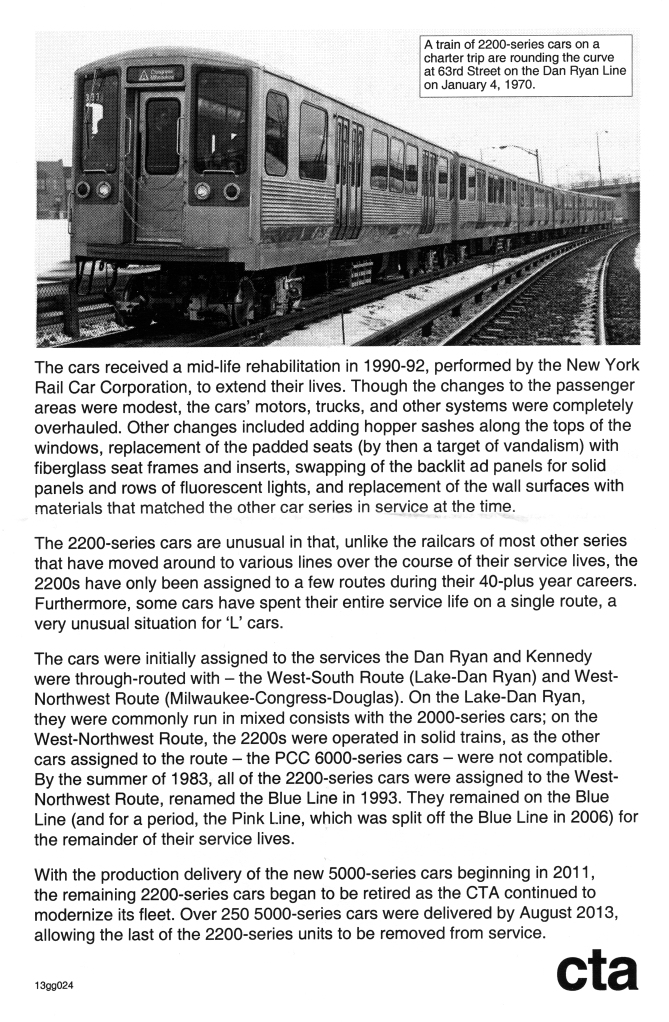
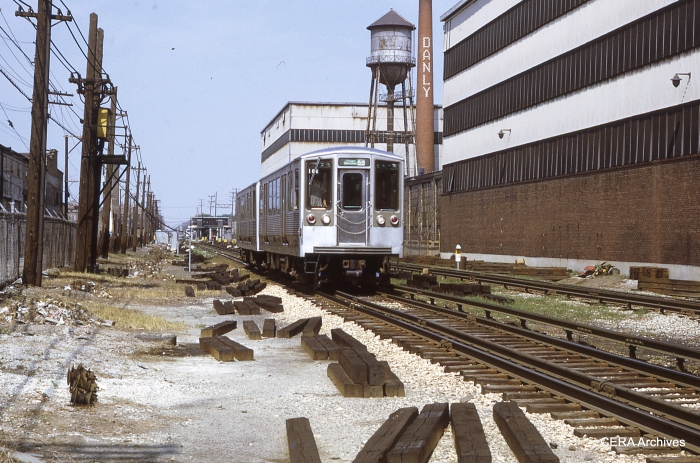
2261-62 at Laramie on Douglas Park (today’s Pink Line) on July 4, 1971.
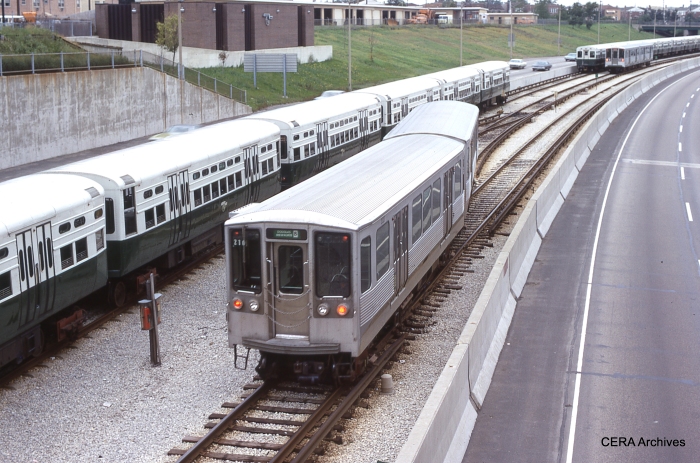
A Douglas-Milwaukee “B” train at Jefferson Park (then the end of the line) in September 1972. (Photo by Philip Horn)

“Blinker” doors on Chicago “L” cars were influenced by their earlier use on PCC streetcars.
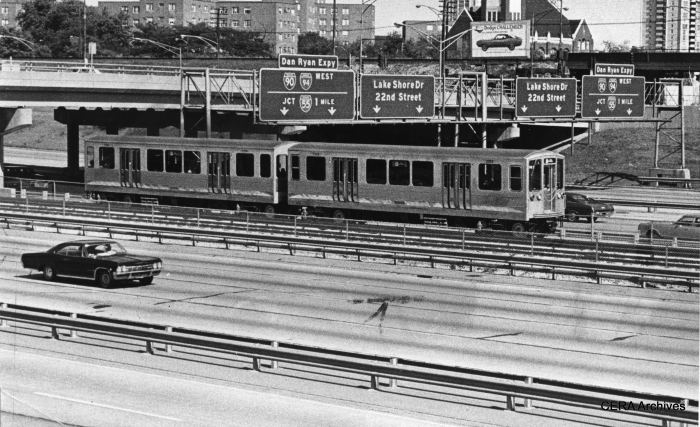
September 28, 1969 – “New CTA trains, Dan Ryan. One of the new CTA rapid transit trains that went into service today, passing under the 31st street bridge, heading north.” (Photo by Pete Peters)